
The quest for letting the body heal itself
Professor Carlijn Bouten has an ambitious intention. Regenerative medicine has to develop from a ‘laboratory experiment’ to a permanent part of the healthcare package. Patients with worn-out tissues, organs or joints must actually be helped with it. In order to realize this, she will in the next ten years coordinate research groups of the universities of Eindhoven, Utrecht and Maastricht in their quest for the possibilities of regenerative medicine. “We want to move from hype to hope.”
“Have you got a new valve for me?” The 11-year-old boy is looking at Carlijn Bouten inquisitively. It is just one of those confrontational questions which the Professor of Regenerative Medicine has to deal with more often during meetings for cardiac patients. “Those are harrowing moments”, Bouten confirms. “You can’t promise anything, you can only emphasize that you are working on it at full throttle. Often even that is enough for them.” In her workroom the boy’s signature is hanging on the wall, together with those of other patients. “Apart from all kinds of brochures and the helpdesks, I keep them posted myself and I answer all their questions personally.”
Each body is formed from an egg cell and a sperm cell and grows by its own means into a complex, independent being. Scientists and physicians see opportunities in this fantastic property. Deploying smart biomaterials and their knowledge of molecular cell biology they want to help the body repair worn-out tissues and organs. Although regenerative medicine is still in its infancy, expectations are high, also among patients.
Nobody can say that Bouten lacks ambition and tenacity. She always wants to perform at the highest level, whether it is in music, tennis, judo or scientific research. “It is my greatest stumbling block. You raise the bar high, which means you are continuously falling short”, she smiles. “You want to beat yourself. This attitude is sometimes detrimental to your environment, but especially to yourself.”
Last May all her efforts in 2016 were awarded with a so-called Gravitation Grant of 18.8 million euros for the further development of regenerative medicine. Spread over ten years and the number of research groups involved, it boils down to a relatively modest amount. “It is particularly the recognition that we are going to conduct innovative research. I find that an honor and I’m tremendously proud of that.”
540 hours
Bouten cooperated with TU/e Professor Bert Meijer, UMC Professors Marianne Verhaar and Hans Clevers, and Pamela Habibovic and Clemens van Blitterswijk from Maastricht University in writing a research request. It took her 540 hours. “It keeps your mind occupied even under the shower or in bed. As my family is very important to me as well, you need to hit the brakes occasionally. Fortunately my husband (Frank Baaijens, Rector of TU/e, ed.) understands that I have to keep doing everything while writing such a request. He has been a tremendous help in that. My children also support me, they were incredibly proud and happy that I pulled it off.”
Bouten finds it important to use her knowledge at the place where she was trained; at TU/e. "I do regard that as a kind of obligation. I worked in Boston for a while in an entirely different research environment. That gives you a fresh view of things. I would quite like to gain inspiration abroad again. It goes without saying that money is important to do what you’re good at, to make progress, but my family situation does not permit a prolonged stay in another country. We actively encourage our students at the Department of Biomedical Engineering to gain experience abroad. Ninety percent of the students do so and they all come back stronger. It does not have to be China or the United States really, it may also be Liège or Leuven. As long as you wander away from the well-trodden paths.”
Bouten is going to stay in the Netherlands for the time being, then, and together with prominent material scientists, cell biologists, tissue technologists and physicians she is going to engage in multidisciplinary top research in the Netherlands. She wants to accomplish high-level cross-fertilization and cooperation. ‘My impact lies in the creation of opportunities where our research domains merge. We form a team and are not competing as scientists; quite the reverse: we are joining forces. The subjects are clear, the approach is free. Ah, it feels good to say that out loud for once.’
Within her own Department at TU/e such cooperation in a tight team is also the key to the achievement of fine results. Researchers Anthal Smits and Sandra Loerakker, both forming part of this team, also emphasize how important it is that the research conducted by the different groups dovetails so well. While the groups of these two researchers study the development of the synthetic heart valve from different angles, they are supported by each other’s results.
Combining computer models with experiments
Loerakker focuses on the mechanical factors that influence the growth and remodeling of heart valves. “It is our goal to be able to control those processes in a smart way“, says Loerakker, “for instance by adjusting the design of the valve. In my group the emphasis lies on the development of computer models, but the link with experiments is essential. Our simulations have already led to a great improvement in valve functionality, of which the details will probably appear soon in a publication.”
How does it work that 'smart control’? “The computer models help us understand and predict how tissues will develop and adjust inside the body. Once those models work well for situations of which we know the outcome from experiments, we can start to carry out different simulations whereby we adjust the design of the valve and watch its effect on functionality and regeneration. If the model predicts that certain changes can lead to drastic improvements in regeneration - and we have seen a convincing example of this one time already - we can test by means of experiments whether that is actually the case.”
Comparing model predictions with experimental results is not simple, Loerakker adds. “A lot depends on the goal we want to achieve with a certain computer model. In most cases we try in particular to understand the physics involved in certain processes, and then we look especially at the main parameters of tissue organization, such as the organization of collagen fibers or cells, and we assess whether the main aspects of those correspond between the model and the experiment.”
Trying to predict immune reactions
Anthal Smits and his PhD candidates are trying to predict the immune reactions that occur when the synthetic valve has been inserted into a body. “At the time it was quite a big thing already to reverse the process”, Smits explains. “In the beginning we tried to grow the valve outside the body, but when it was inserted, the cells that were harvested in the lab did not react the way we had hoped. Therefore it was decided to place the synthetic valve without cells in the body. The immune reactions to that proved to be essential for starting the process whereby endogenous cells finally replace the valve with new tissue that was being made by the own body. In this process a very important role is played by macrophages, a specific type of white blood cells that were always regarded like a kind of blunt ‘workers’, and which are responsible for protecting the body against unwanted intruders like bacteria. We found out that these cells have yet another important feature; they attract other cells and thus have an organizational role in the recovery as well.”
Smits thinks that this is also how it works with the synthetic heart valve. “It depends on a great many factors how well that process progresses. This concerns things like the material of which the valve is made, the structure, the pressure by the blood and the medication that may need to be administered. In addition, the immune reaction in older people is less intense than in young children, so you need to take that into consideration also. What you want to prevent in any case is that scar tissue develops as a result of the cell growth on the valve, which is slowly degraded. That is disastrous. Therefore you need to take a wide variety of factors into account and strike the right balance. Other groups, like the one led by Sandra Loerakker for instance, in turn provide data to my group to get that fixed again.”
Xeltis
Smits is optimistic about the further development and hopes that within the foreseeable future the synthetic valve will also have found its way to the hospital. The company Xeltis, originally a TU/e spin-off, started a clinical trial in 2016. A valve was inserted in three children. “For the time being the results from this trial are looking good”, says Smits. “We have a lot of mutual contact with Xeltis and exchange results, although it is a commercial enterprise, of course, which means it is showing us only as much as it wants to. We are focusing mainly on truly understanding the underlying processes to manufacture a better prosthesis.”
Apart from the heart valve there are many other scopes of application for this technology. “Also research into nerve regeneration, for example in case of paraplegia, is done a lot and in our group we also conduct research into the development of blood vessels for kidney dialysis and the recovery of a poorly functioning kidney”, says Smits. Loerakker adds: “Within the cardiovascular field, blood vessels are the most obvious other application. At this moment I cannot estimate how much adjustment or expansion of our current models that would require, but future research should give us more insight into that.”
Bouten advocates a ‘paperclip technology’, effective and applicable simply, so that medical solutions will also find their way to hospitals in Africa or India, for example, and cause a revolution in medicine. “If we realize a breakthrough, we will be saving millions of people a lengthy disease process in the future. Their quality of life will improve considerably and healthcare costs can be reduced.”
When asked about her scientific dream, a long silence ensues. Then there is a resolute reply: “I want to know how the organization of a tissue comes about in order to be able to copy it. And I really want us to be able within twenty years to cure a number of patients. From hype to hope. Although it is a long way, we must get rid of that hype. It really needs to be integrated with our everyday hospital practice. Regenerative medicine will be part of the healthcare insurance package before long. Accessible tailor-made work for all patients.”
Main photo | Bart van Overbeeke

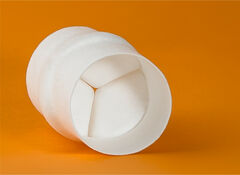
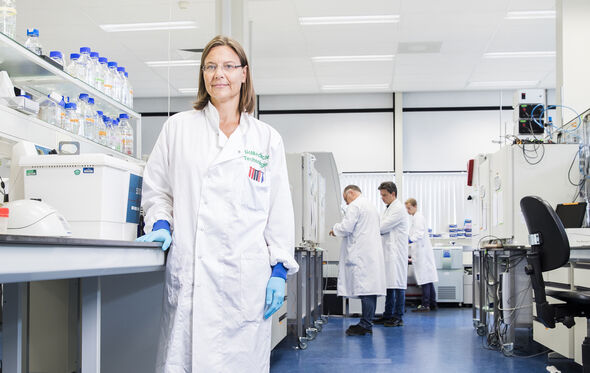
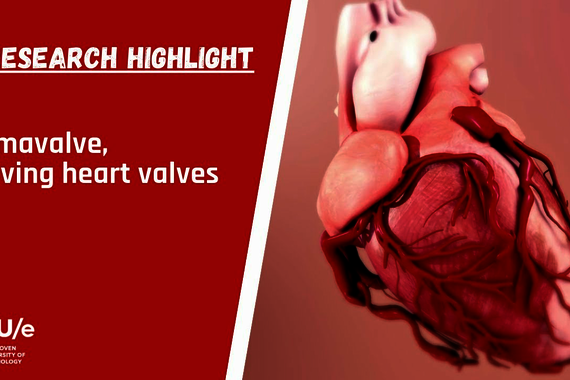
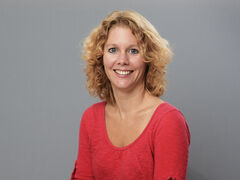
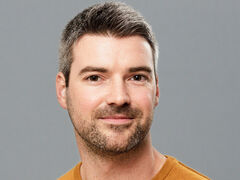
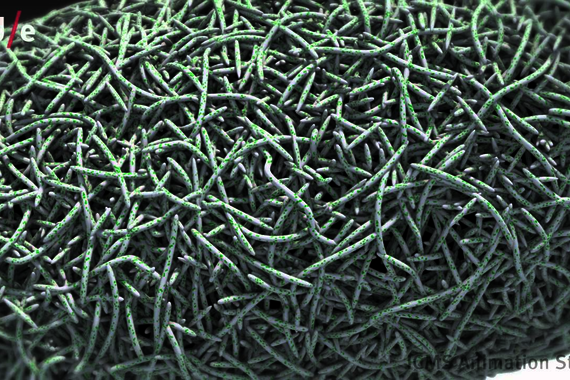
![[Translate to English:] Carlijn Bouten. Foto | Vincent van den Hoogen [Translate to English:] Carlijn Bouten. Foto | Vincent van den Hoogen](/fileadmin/_processed_/e/f/csm_TUe_Carlijn_Bouten_0842_verkleind_f278603a2b.jpg)
Discussion